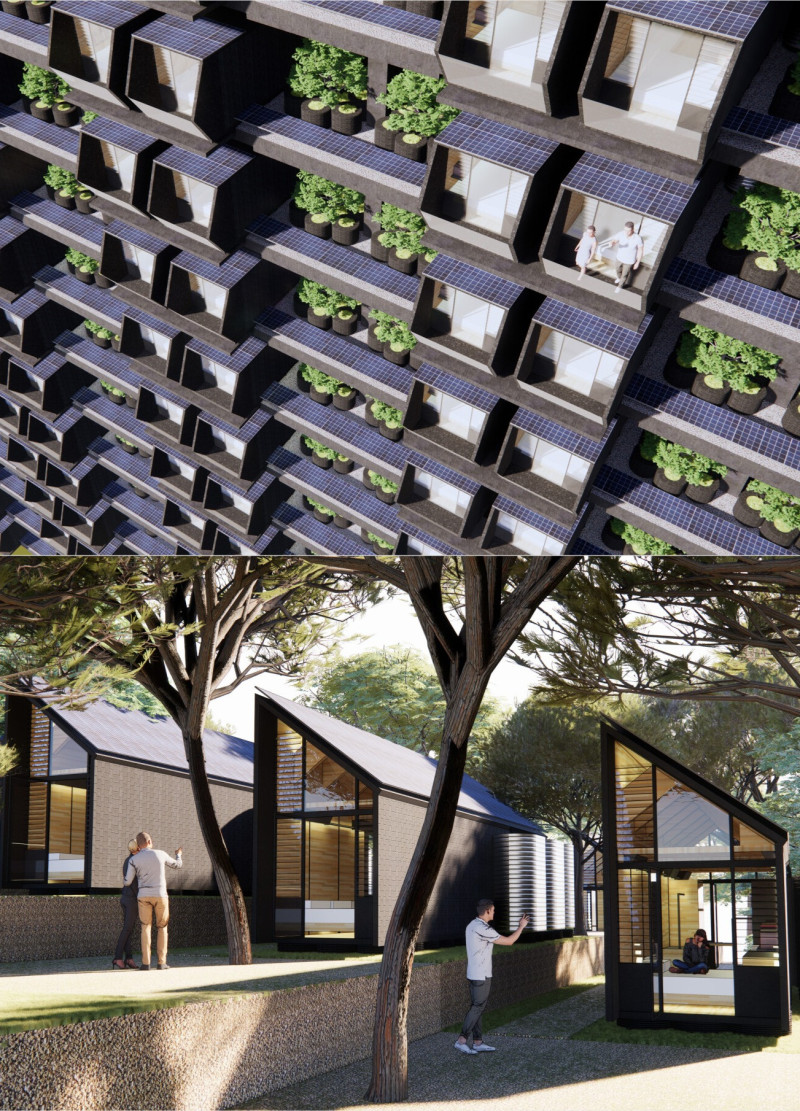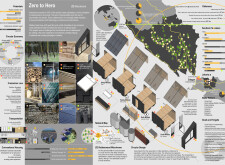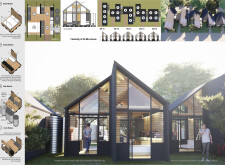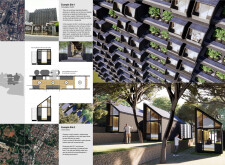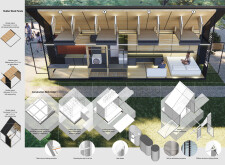5 key facts about this project
### Overview
The ZG Microhome project is located in Jakarta, Indonesia, and addresses the urgent housing shortage in the region while promoting the sustainable use of rubberwood, a local renewable resource. This initiative integrates ecological and social considerations, focusing on affordable housing solutions that support local rubber farmers and stimulate the local economy.
### Spatial Strategy
The design employs a modular approach, featuring various living configurations that include distinct modules for sleeping, hobbies, cooking, and bathing. Each module is designed to optimize functionality within a compact footprint, encouraging versatility and adaptation to users' needs. The layout promotes communal interactions while ensuring personal privacy, fostering a sense of community among residents.
### Material Specification
Constructed primarily from rubberwood, the ZG Microhome utilizes several carefully selected materials that enhance durability and sustainability. Key components include modular rubberwood panels that facilitate reconfiguration and recycling, structural metal elements, and glass for natural lighting and ventilation. Additionally, reinforced concrete from local demolition sites is used for foundations, promoting resource reuse. The integration of solar panels and water filtration systems reflects the project's commitment to energy efficiency and improved living conditions.


